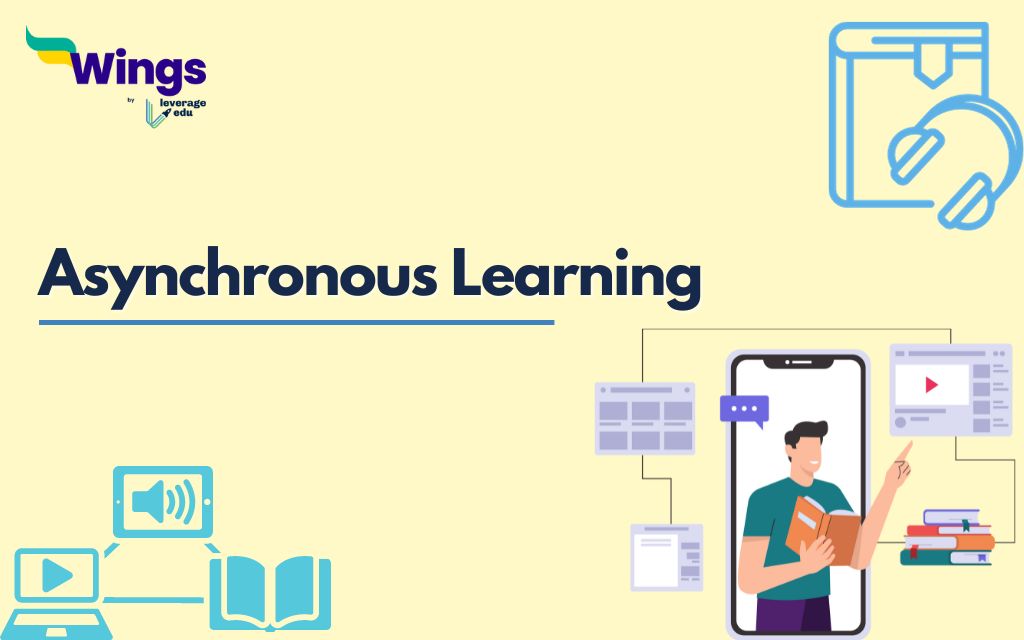Did you lately complete any online coursework while working a 9–5 job? Or did you sign up for a certification program or an online course that you could finish at your own pace and on your own schedule? You used an asynchronous learning strategy if you fit into one of these categories. Yes, a lot of you must be asking, “What’s that all about?”. To answer your question we will cover asynchronous learning in this blog. Also, the blog explains the usage of this learning type. In addition, we will assess its pros and cons. Continue reading to know more in detail.
Also Read: Different Learning Methods That You Must Know About
Contents
Definition of Asynchronous Learning
Any kind of learning that a person can complete on their own timetable without requiring a facilitator to provide instruction in real time is known as asynchronous learning. It consists of self-paced learning exercises that students can complete from anywhere in the world and at their own convenience.
It is quite different from synchronous learning, which may be done both in person and online but necessitates regular attendance at scheduled classes, the presence of an instructor or facilitator, and regular feedback to enhance learning. Often, this learning type is also known as a “learner-centered approach”.
Also Read: Types of Education: Formal, Informal & More
Significance
The education sector has seen a significant transformation with the introduction of online learning. People are using online learning resources and choose to advance their skills or learn new things at their own speed. With this kind of learning, students have self-paced access to a variety of study resources, including lectures, e-books, assignments, and tests. They are not required to be physically present at the same time every day, in the same classroom, in the same place, or on a regular basis.
Asynchronous Learning may include:
- Webinars
- Pre-recorded lectures
- Online educational videos
- Any type of e-learning module
- Email courses
It is important to remember that when we discuss nonsynchronous learning, we don’t imply that there are no major time constraints or deadlines for finishing a lesson, video, or module. This kind of approach might have strict deadlines. However, it also gives learners the freedom to select their own learning strategy and schedule. Also, this learning type frequently requires that the outcome (finished course, grades, or status) is available by a specific date.
One of the most advanced kinds of asynchronous learning is called e-learning. Since computer-based or web-based training programmes are the norm, they typically call for a learning platform where facilitators may upload training materials and where students can log in to view their assignments.
Also Read: Learning Outcomes in Teaching: Types, Benefits and Characteristics
Difference Between Asynchronous and Synchronous Learning
When comparing synchronous versus asynchronous learning approaches, there is a common argument. It is widely believed that an asynchronous learning strategy cannot teach everything. In fact, only a few study materials or courses can be explained using an asynchronous learning approach. They require hands-on instruction and appropriate supervision from an instructor. You cannot learn how to swim by only watching videos on the internet.
The approach is the primary distinction between Synchronous and Asynchronous learning. Synchronous learning is primarily concerned with the methods of disseminating information in a conventional environment. On the other hand, asynchronous learning is more concerned with the needs and schedule of the student. Let’s take a look at some of the other differences between the two approaches:
- Teachers and students participate in synchronous classes in real-time while attending from different locations. Asynchronous learning, on the other hand, is more laid back. It allows students to access study materials at different times of day and from different places.
- In fact, synchronous learning is more structured, contains dynamic learning possibilities, receives more attention, and is highly engaging. It also receives instant feedback and reactions. Conversely, asynchronous learning is more democratic and easily accessible. It allows students to learn at their own pace and convenience and to return to the content whenever necessary.
Also Read: VARK Learning Styles, Strategies & Examples
Advantages of Asynchronous Learning
Now that you have an idea of what asynchronous learning is all about, let’s take a look at the benefits of asynchronous learning:
- The high degree of adaptability
- Self-directed learning
- Able to review previously taught information and build new skills as needed
- Time management
- Convenient access to the course materials
- Scalable and quantifiable learning
In contemporary times, an increasing amount of degrees and certificates are available online. These programs provide more options than ever for asynchronous study material consumption and learning. Both learners and educators can choose which form of learning to focus on by considering the ultimate purpose of the learning material.
Related Reads:
FAQs
Ans: When educators and learners come together at the same time and location—whether virtual or real—they are said to be engaging in “real-time” learning. When students connect with each other over extended periods of time and access information at their own leisure, this is referred to as asynchronous learning.
Ans: Writing assignments, online discussion forums, and presentations to name a few.
Ans: Synchronous learning takes place when students and teachers meet on a regular basis, usually in a classroom.
Follow Leverage Edu for more educational and informative articles on school education.
 One app for all your study abroad needs
One app for all your study abroad needs














